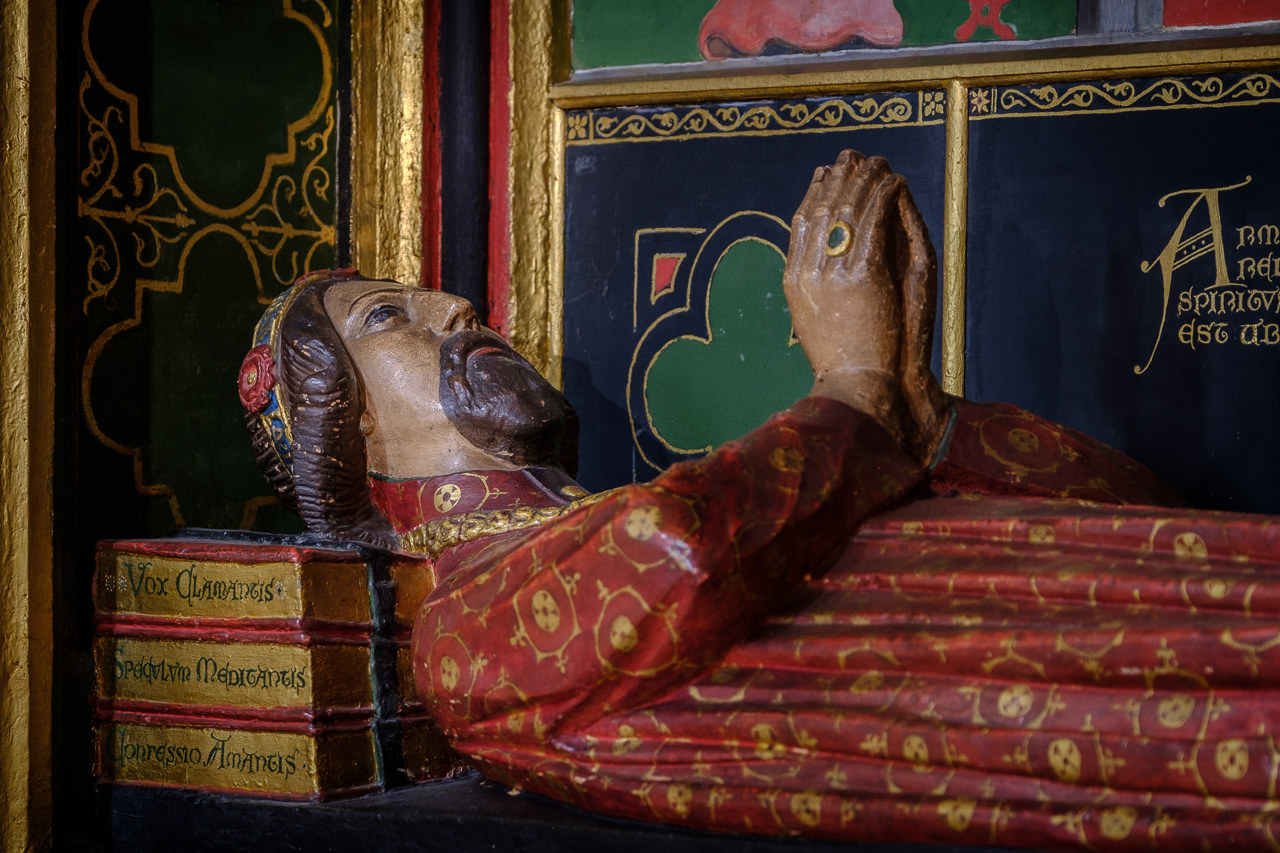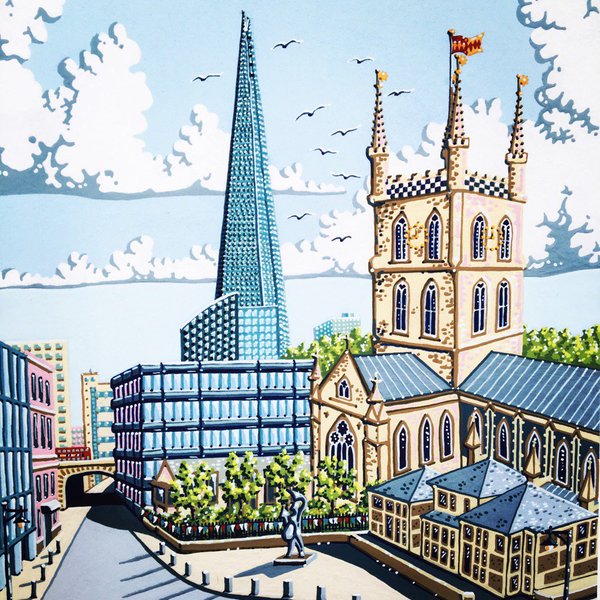"I walked over the fields to Southwark..., and I spent half an hour in Mary Overy's Church, where are fine monuments of great antiquity, I believe, and has been a fine church." Samuel Pepys - 3 July 1663
The Cathedral and Collegiate Church of St Saviour and St Mary Overie stands at the oldest crossing-point of the River Thames at what was for many centuries the only entrance to the City of London situated across the river. A verbal tradition passed on to the Elizabethan historian John Stow suggests that the first Christian establishment was a community of nuns in the 7th century, but the first written reference is the mention of a 'minster' in the Domesday Book of 1086.
A Priory
In 1106 the church was 're-founded' by two Norman knights as a priory, whose members lived according to the rule of St Augustine of Hippo. The church was dedicated to St Mary and later known as St Mary Overie ('over the river'). The Augustinian Canons created a hospital alongside the church; this was the direct predecessor of today's St Thomas's Hospital opposite the Houses of Parliament and originally named in honour of St Thomas Becket who was martyred at Canterbury in 1170.
During the building’s life as St Mary Overie, the priory was under the control of the Diocese of Winchester which meant that many of the powerful Bishops of Winchester were involved in shaping the building and what happened in it. Several bishops oversaw different phases of building that shaped the cathedral that we see today. It was through Cardinal Beaufort, the rebuilder of the south transept, that the building was witness to its only Royal Wedding when Beaufort’s niece Joan married King James I of Scotland, in 1423.
 Perhaps the most famous resident of the priory was the court poet John Gower who lived there at the start of the 15th century. He was a friend of Chaucer who was famous for The Canterbury Tales which begins in Southwark. Gower died at the priory and left a large part of his money to St Mary Overie. His beautiful tomb can be found in the nave of the Cathedral.
Perhaps the most famous resident of the priory was the court poet John Gower who lived there at the start of the 15th century. He was a friend of Chaucer who was famous for The Canterbury Tales which begins in Southwark. Gower died at the priory and left a large part of his money to St Mary Overie. His beautiful tomb can be found in the nave of the Cathedral.
A Parish Church
At the Dissolution of the Monasteries in 1539, the last six canons were pensioned off although they continued to live in buildings north of the church. The church itself became the property of King Henry VIII who rented it to the congregation. It was re-named St Saviour's, though the old name remained in popular usage for many years.

Tired of renting from the King, a group of merchants from the congregation, known as 'the Bargainers', bought the church from King James I in 1611 for £800. It was during this time that the church became the stage for many of those involved in the theatres of Shakespeare’s day. Actors, dramatists and theatre workers such as Edmond Shakespeare (William’s brother), John Fletcher and Philip Henslowe were all buried in the building.
It was during this period, that Lancelot Andrewes became the only Bishop of Winchester to be buried in the Cathedral in 1626. He was involved with overseeing the translation of the King James Bible and his tomb can be found by the High Altar.
The church ministered to its parish throughout the 17th and 18th centuries and various repairs and alterations were made to the building. The state of the building became a real cause for concern in the 1820s. Already in need of further repairs, the whole situation of the building was affected by the proposals for a new London Bridge to be constructed much closer to the church. The Bridge Committee suggested that St Saviour's be demolished and a smaller church be built on another site. After much argument the decision was made to restore the building, and it was largely due to the architect George Gwilt that major parts of today's Cathedral are still standing.
By the mid-19th century, living and working conditions in south London were intolerable. They were depicted by novelist Charles Dickens in distressing detail and by Charles Booth's social researches with grim accuracy. It was proposed that a new diocese should be created and in anticipation for this a new nave was designed by Sir Arthur Blomfield in 1895.
A Cathedral
'The present building, doubtless, is a splendid church, much too large I think for a parish church, large enough and quite worthy, as to style, to be converted into a Cathedral, if the interior were re-arranged, and the galleries, the pews, the pulpit, the desk, and other obstructions were moved; but its situation is most unfortunate, and deplorable; it stands in a deep hole, surrounded closely on the north by high warehouses, on the south and west by a covered vegetable fruit market, and immense warehouese, and by an ugly railway in a tube, and on the east by the roadway to London Bridge, which is nearly half as high as the roof of the church'.
W J Meymott, 1881

St Saviour's Church became Southwark Cathedral in 1905. The diocese which it serves stretches from Kingston-upon-Thames in the west to Thamesmead in the east and Gatwick Airport in the south. It has a population of two-and-a-half million people, served by over 300 parishes.
In 2000, major extensions designed by Richard Griffiths were added north of the Cathedral; these provide meeting and conference rooms, a library, the Education Centre, the Shop and Refectory.
Now as a Cathedral, Southwark is once again (as in monastic days) a centre for a pattern of daily worship within the English Cathedral music tradition. It continues to serve the people of its parish and the diocese, to be a centre of teaching, of worship, prayer and pilgrimage and offers an open and inclusive welcome to all who come here.